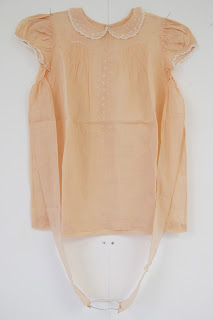With a week to go, I am taking the "brave / foolish / right / wrong" (delete as appropriate) decision not to show "Off the Cuff" as part of my final MA project. Samples have been made, patterns cut and recut, stitches sewn and unpicked, but nothing is close to being presentable.
The potential for reworking clothing elements to take on the role of more traditional jewellery mounts, is something that realistically needs more time than is available before an arbitrary submission deadline. “On the Cuff” is an expression, not so familiar as “Off the Cuff”, but at this point in time is a more appropriate description of what this work has become ... a promise of delivery in the future.
Samples so far have used pattern-cutting techniques to manipulate the fabric into forms that hint at traditional jewellery mounts. Decreasing circles of cloth are carefully measured and stitched. Laid flat, the form acts as a frame for the hole, the negative space, in the cloth. Lifted, the form becomes a telescopic structure that if worn, alters the familiar shape of the body, or can be used to hide a secret, in a way not dissimilar to concealing a photograph or keepsake in a locket.
When positioned over the body (for example on the chest, or on an arm), this allows me to effectively re-present the exposed flesh. Unadorned skin could take on the role of a gemstone, and assume the values and significance of what, in monetary terms, is often the most valuable element in traditional jewellery. By using the textile piece to frame the body in this way, the negative space would become the positive object. The body would be reassigned as a gemstone; the fabric would be reassigned as a frame, or mount.
I know that potentially this research could produce some really exciting work, with fabric structures being displayed in a way that are almost familiar - folded on a shelf or hung on a clothes hanger - giving an indication that they might be clothing. But there the familiarity would stop. The forms might not be instantly obvious. How they are to be worn is not evident.
Exciting, isn't it?!
PS Don't worry, Thick Skinned, Left Behind and Not so Thick Skinned are all ready and presentable, so there won't be an void where Vanda should be!


.jpg)


.jpg)



















